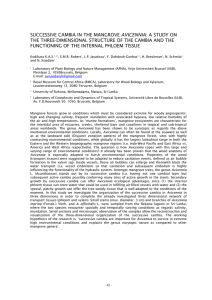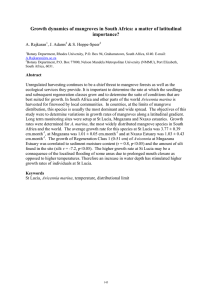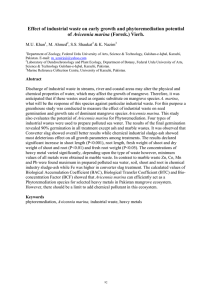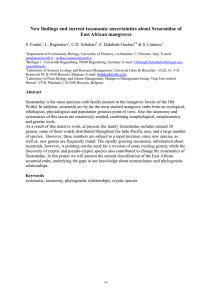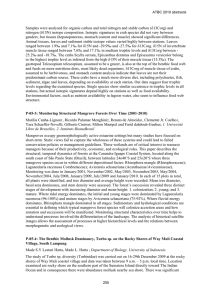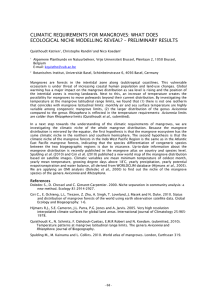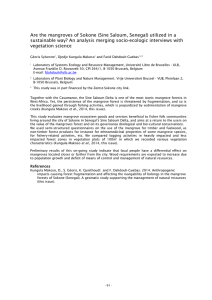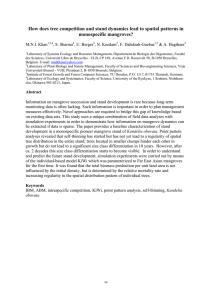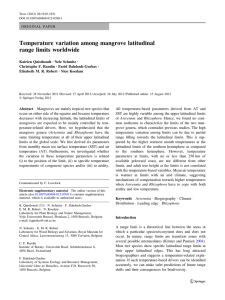Avicennia of well-adapted wood anatomical characteristics and special radial growth? E.M.R. Robert
advertisement
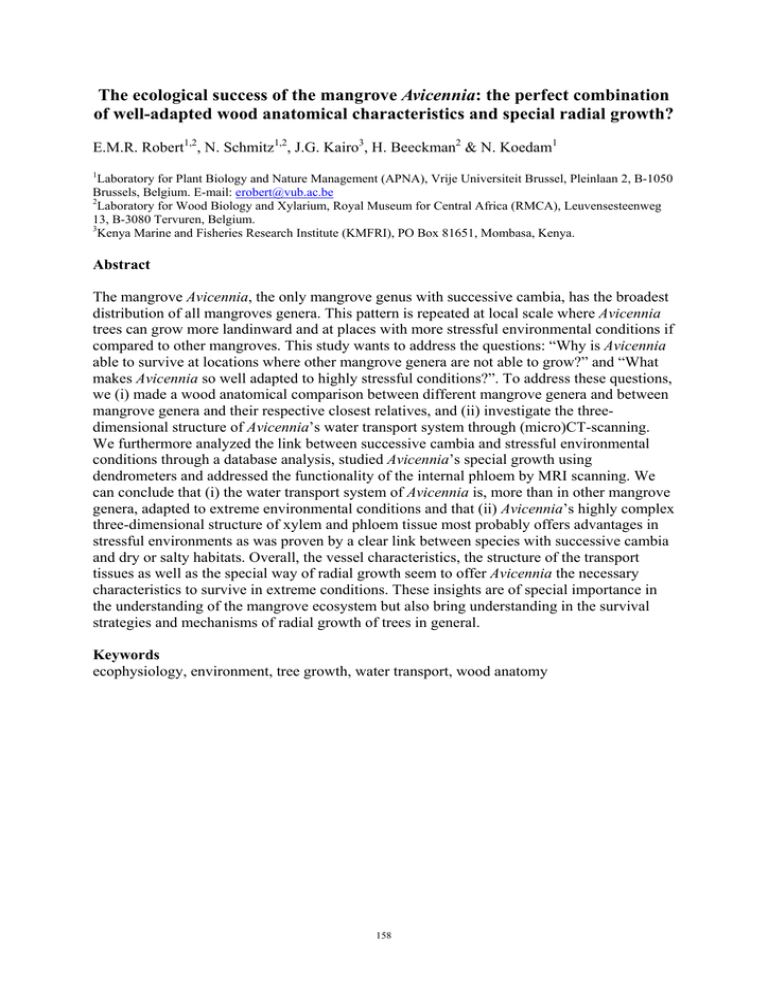
The ecological success of the mangrove Avicennia: the perfect combination of well-adapted wood anatomical characteristics and special radial growth? E.M.R. Robert1,2, N. Schmitz1,2, J.G. Kairo3, H. Beeckman2 & N. Koedam1 1 Laboratory for Plant Biology and Nature Management (APNA), Vrije Universiteit Brussel, Pleinlaan 2, B-1050 Brussels, Belgium. E-mail: erobert@vub.ac.be 2 Laboratory for Wood Biology and Xylarium, Royal Museum for Central Africa (RMCA), Leuvensesteenweg 13, B-3080 Tervuren, Belgium. 3 Kenya Marine and Fisheries Research Institute (KMFRI), PO Box 81651, Mombasa, Kenya. Abstract The mangrove Avicennia, the only mangrove genus with successive cambia, has the broadest distribution of all mangroves genera. This pattern is repeated at local scale where Avicennia trees can grow more landinward and at places with more stressful environmental conditions if compared to other mangroves. This study wants to address the questions: “Why is Avicennia able to survive at locations where other mangrove genera are not able to grow?” and “What makes Avicennia so well adapted to highly stressful conditions?”. To address these questions, we (i) made a wood anatomical comparison between different mangrove genera and between mangrove genera and their respective closest relatives, and (ii) investigate the threedimensional structure of Avicennia’s water transport system through (micro)CT-scanning. We furthermore analyzed the link between successive cambia and stressful environmental conditions through a database analysis, studied Avicennia’s special growth using dendrometers and addressed the functionality of the internal phloem by MRI scanning. We can conclude that (i) the water transport system of Avicennia is, more than in other mangrove genera, adapted to extreme environmental conditions and that (ii) Avicennia’s highly complex three-dimensional structure of xylem and phloem tissue most probably offers advantages in stressful environments as was proven by a clear link between species with successive cambia and dry or salty habitats. Overall, the vessel characteristics, the structure of the transport tissues as well as the special way of radial growth seem to offer Avicennia the necessary characteristics to survive in extreme conditions. These insights are of special importance in the understanding of the mangrove ecosystem but also bring understanding in the survival strategies and mechanisms of radial growth of trees in general. Keywords ecophysiology, environment, tree growth, water transport, wood anatomy 158
